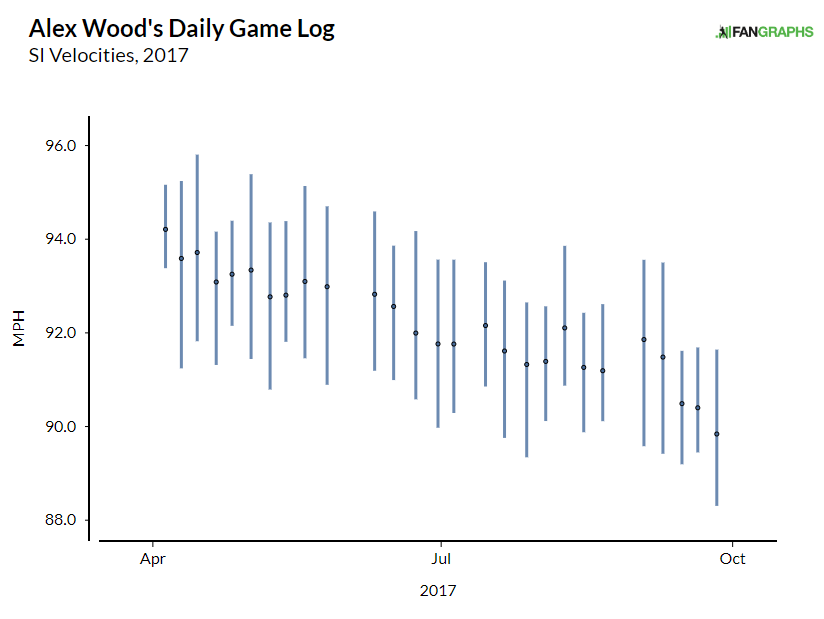Below is an analysis of the prospects in the farm system of the St. Louis Cardinals. Scouting reports are compiled with information provided by industry sources as well as from our own (both Eric Longenhagen’s and Kiley McDaniel’s) observations. For more information on the 20-80 scouting scale by which all of our prospect content is governed you can click here. For further explanation of the merits and drawbacks of Future Value, read this.
All of the numbered prospects here also appear on The Board, a new feature at the site that offers sortable scouting information for every organization. That can be found here.
Other Prospects of Note
Grouped by type and listed in order of preference within each category.
Catching Depth
Julio Rodriguez, C
Pedro Pages, C
José Godoy, C
Rodriguez, 22, has some power and arm strength, and aside from a bad 2018, he’s always performed. Pages is similar but faces an uphill climb as far as visual evaluations are concerned because he’s on the Alejandro Kirk spectrum. Godoy might get some big league time in 2019. He’s a contact-oriented lefty stick with well-rounded defensive ability.
Young Arm Strength Fliers
Luis Ortiz, RHP
Logan Gragg, RHP
Yordy Richard, RHP
Alvaro Seijas, RHP
Luis Tena, RHP
Jeffry Abreu, RHP
Nathanael Heredia, LHP
Leonardo Taveras, RHP
Tyler Statler, RHP
Seijas and Taveras are the oldest names in this group (they’re 21). Seijas gets up to 97 and has a good changeup, but we also spoke with someone who saw him sit 90-92. He has relief projection if the velo can settle into the 94-plus area. Taveras has a live arm (up to 98), and he’s somewhat projectable at 6-foot-5. His mechanical inconsistency impacts his control and breaking ball quality. He also has relief ceiling. Ortiz, 19, is the most projectable of the group at 6-foot-3 and 170 pounds. He’s up to 94 with lots of spin and some curveball feel. Gragg’s velo was up after he was the Card’s eighth rounder. He’s 92-94, touching 95, with a slider that could use some tweaking. Yordy Richard is only 17 and up to 94 with an advanced changeup. His frame is a little more stout. Tena’s is, too. He’s 20 and has been up to 96, though the secondaries are fringy. Abreu was acquired from the Dodgers for Jedd Gyorko. He has a low-90s fastball but the best curveball of this group. Heredia is 19, projectable, and up to 95; the delivery is a little less good than others here. Statler is purely a physical projection lottery ticket. He’s a very wiry 6-foot-6, up to 93 with a sinker.
Various Kinds of UTM (Up The Middle) Bats
Chandler Redmond, 2B
Franklin Soto, SS
Albert Inoa, 2B
Nick Dunn, 2B
Joerlin De Los Santos, CF
Ramon Mendoza, 2B
Redmond is a huge guy with huge power who is a Muncy/Shaw non-traditional second base fit. Soto, 20, has plus bat speed and a good build, but his in-the-box footwork is rough right now. Inoa, 18, is a contact-oriented second baseman with a medium build and some speed. Dunn also has contact skills, but he’s a 40 athlete who needs to perform, and he didn’t last year. Mendoza is similar but a few levels behind Dunn. De Los Santos lacks physical projection but is twitchy and athletic.
Conversion Arms and Older Dudes
Walker Robbins, LHP
Ben Baird, RHP
Edgar Escobar, RHP
Evan Kruczynski, LHP
Angel Rondon, RHP
Mitchell Osnowitz, RHP
Escobar is 23, and has a swing-and-miss heater up to 96 and an average slider. Kruczynski’s velo and command backed up last year but we liked him as a four-pitch fifth starter before that happened. Rondon is also an arm strength-only relief type. Osnowitz is 28 but might pitch in the big leagues. He’s up to 98 with other bat-missing fastball traits (backspin, mostly). Robbins and Baird were both 2015 Perfect Game All-Americans as position players who are moving to the mound. Robbins is up to 92 with some feel for spinning a curveball. Baird has more arm strength but his conversion is so new that all we know is he’s been into the mid-90s.
System Overview
This system is fine. There are a couple of potential impact talents up top, several young, high-variance players who could join them if things click (most of the 40+ tier), and pitching depth and depth up the middle, though you have to venture into the Others of Note to find the latter.
There seems to be an org-wide taste for righty corner power bats, as all three departments have acquired at least one in the last few years. The pro department has had an impact even though the Cardinals perennially compete because the club has traded for younger prospects with the glut of upper-level outfielders they signed and developed well. The same stable vibe the big league team gives off is present in St. Louis’ talent acquisition track record.

